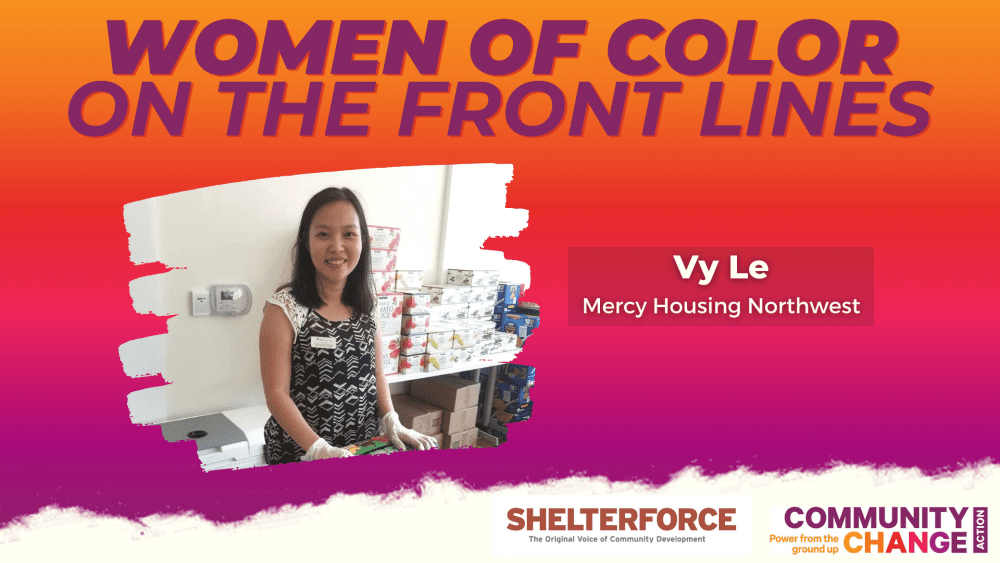
For many families, having a home with a safe and sensible mortgage is the primary means to wealth accumulation, stability and access to other asset-building opportunities, such as higher education or entrepreneurship. But now, years after the financial crisis technically ended, we still feel its after-effects, leaving many questioning the value of homeownership as public policy. That perspective is simply wrong.
For low- and moderate-income homeowners, the value of high-quality loans is especially important. Although these families own their homes, they typically do not own significant amounts of other assets. Studies after the financial crisis have demonstrated that such homeowners who remained in their homes often had lower overall housing costs and greater assets as compared to renters. But we also know that homeownership rates vary wildly by race, with white Americans being considerably more likely to own their homes than other Americans. There have been efforts to improve the road ahead, but these efforts have stalled.
At the end of the last Congress, there was some movement toward comprehensive housing finance reform, which included winding down the government-sponsored enterprises, Fannie Mae and Freddie Mac. For numerous reasons, this legislation, which had many positives as well as negatives, did not advance. The current political environment all but ensures there will be no Congressional movement on homeownership before the 2016 elections.
Part of that star-crossed legislation included improving the lending environment for manufactured homes. CFED was hopeful that the proposal could serve as a starting point for moving away from the chattel loan market that too often imposes high fees and rates and is driven by just a handful of lenders. But this is just part of the vast array of wealth-building challenges that faces owners of manufactured homes. A lending environment that encourages depreciation can only be addressed from multiple angles.
Readers here know the answers to mainstreaming manufactured housing and manufactured housing finance. It is not by usurping the Consumer Financial Protection Bureau’s rulemaking authority with a bad bill, promoted through an anecdote or two, and industry-written comment pages. The key is to make manufactured housing part of the broader housing finance market. There are three primary policy ways to do so: better loans, better local land use laws and better titling.
The first two are obvious. When talking to housing experts, advocates and local leaders, the idea of financing a home like a car makes little sense to them. They often ask: Why would Congress rubber-stamp a 14 percent home loan? Why doesn’t Fannie or Freddie develop tools to support innovative loan programs that both protect homeowners and expand competition in the lending market?
Equally vexing is the strategy employed by far too many state and local governments to limit the use of manufactured homes in their jurisdictions. High-quality, aesthetically appealing homes available at significantly lower costs than their alternatives are essentially removed from the developer’s toolkit.
Undergirding each of these challenges is how states treat manufactured housing when it comes to titling. In general, states, by default, title a manufactured home as personal property, like a boat or a car. While forty states have some sort of conversion statute on the books, only a handful of states have relatively easy rules for converting manufactured home titles to real estate once the home is affixed to private property. Most states, on the other hand, have onerous laws and rules that essentially eliminate the option for homeowners who rent the lot beneath the home from getting a real estate title. For example, California, a reasonable state on many consumer issues, requires that a manufactured homeowner have a 35-year lease and that the home be affixed to a permanent foundation. Very few community owners would permit either, which condemns the family and subsequent owners to more expensive, potentially predatory lending options.
Homes without real estate titles, local permitting officials will argue, are not truly assets to the community, and have little value or role in a residential zone. Homes without true home loans are less likely to facilitate wealth building.
So what makes a structure a home? Slapping a real estate designation on a 28’ x 48’ structure does not magically make it a home. A 4.875 percent, 30-year fixed-rate loan won’t, on its own, do it either. Communities, neighbors and local leaders need to see that a home, a solid addition to a block, is one that allows a family to be part of that community, regardless of the price, construction process, or foundation.
That’s the idea behind CFED’s new campaign to show #WhatHomeLooksLike. Through images of real homes owned by real people, the campaign will demonstrate what manufactured homes look like, why they matter and how they can grow as part of the American housing fabric.
CFED thinks titling reform is key to making a home a home, in that it mainstreams manufactured housing in the eyes of lenders, investors and policymakers. It is simply undeniable that lenders will offer real mortgages to manufactured homes in communities as long as they are titled as real estate. This has been done on a small scale, but needs to be expanded much more widely through such approaches as states adopting the Uniform Manufactured Housing Act.
Between now and CFED’s Innovations in Manufactured Homes Conference at the end of October in Minneapolis, we’ll be using the #WhatHomeLooksLike campaign to show that these houses are homes and should be titled as such. At that event, which promises to be the biggest gathering of the manufactured housing field yet, we will tackle how we can get communities to see what we’ve known for years: that manufactured homes are just like any other home: a comfortable place where families spend time together, while building equity at the same time.
(Photo credit: Thomas Runley, via flickr, CC BY 2.0)






Ownership doesn’t make a structure a home — the people who live there make it a home. Every house I’ve ever lived in as a long-term renter — I’ve considered it my landlord’s house, but my home. I’ve raised my son here, I’ve made memories here, laughed and cried. The only difference is that I’m not responsible if the roof or an appliance decides to go kablooey.
We need to quit drawing a line between renters and homeowners — neither is a guarantee against a bad neighbor, and neither is a determining factor in community involvement or stability. A home, like anything else in life, is what you make it.